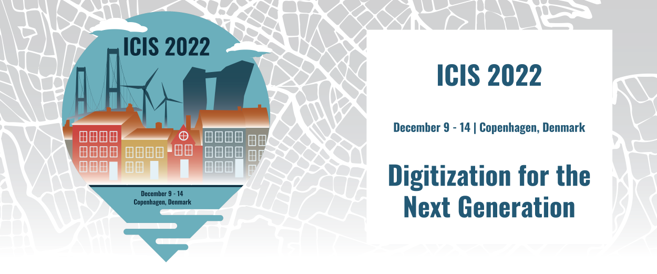Paper Number
1800
Paper Type
Complete
Description
We present material-affective assemblage thinking as an alternate theoretical lens to sociomateriality in the study of scalar phenomena that scale multidimensionally and multitemporally. We argue that given their unbounded characteristics, such phenomena are challenging to study using sociomateriality that anchors ontological realism to intra-action contingent on observed practices, operating within bounded spaces. Inspired by Deleuze and Guattari, we propose an ontology of immanence where there are no inherent boundaries between bodies, only co-existence, and extension of assemblages through affective flows. Conceiving three conceptual devices – assemblages as virtual worlds, affects as flows, and time-space as rythmscapes – we exercise our theoretical lens on the case of the George Floyd big bang to illustrate how material-affective assemblage thinking can be used to research phenomena that flow as an ongoing process of becoming, agglomerating larger territories in co-functioning that transcend material, non-material, time, and space boundaries.
Recommended Citation
Patel, Shama and Hansen, Mathias Tinghøj, "Material-Affective Assemblage Thinking in Researching Scalar Phenomena" (2022). ICIS 2022 Proceedings. 7.
https://aisel.aisnet.org/icis2022/adv_methods/adv_methods/7
Material-Affective Assemblage Thinking in Researching Scalar Phenomena
We present material-affective assemblage thinking as an alternate theoretical lens to sociomateriality in the study of scalar phenomena that scale multidimensionally and multitemporally. We argue that given their unbounded characteristics, such phenomena are challenging to study using sociomateriality that anchors ontological realism to intra-action contingent on observed practices, operating within bounded spaces. Inspired by Deleuze and Guattari, we propose an ontology of immanence where there are no inherent boundaries between bodies, only co-existence, and extension of assemblages through affective flows. Conceiving three conceptual devices – assemblages as virtual worlds, affects as flows, and time-space as rythmscapes – we exercise our theoretical lens on the case of the George Floyd big bang to illustrate how material-affective assemblage thinking can be used to research phenomena that flow as an ongoing process of becoming, agglomerating larger territories in co-functioning that transcend material, non-material, time, and space boundaries.
When commenting on articles, please be friendly, welcoming, respectful and abide by the AIS eLibrary Discussion Thread Code of Conduct posted here.



Comments
18-Theory